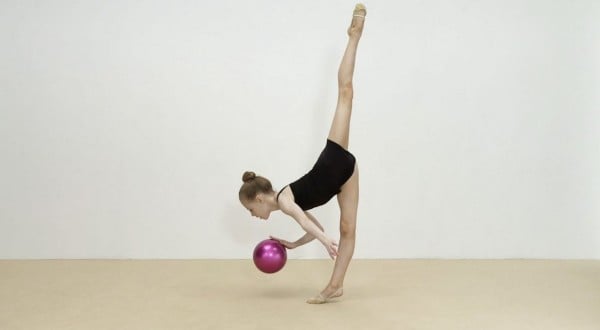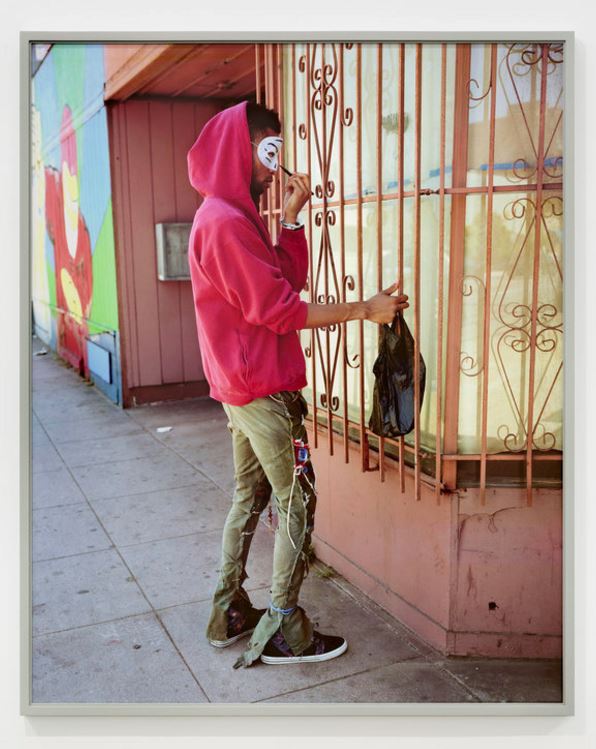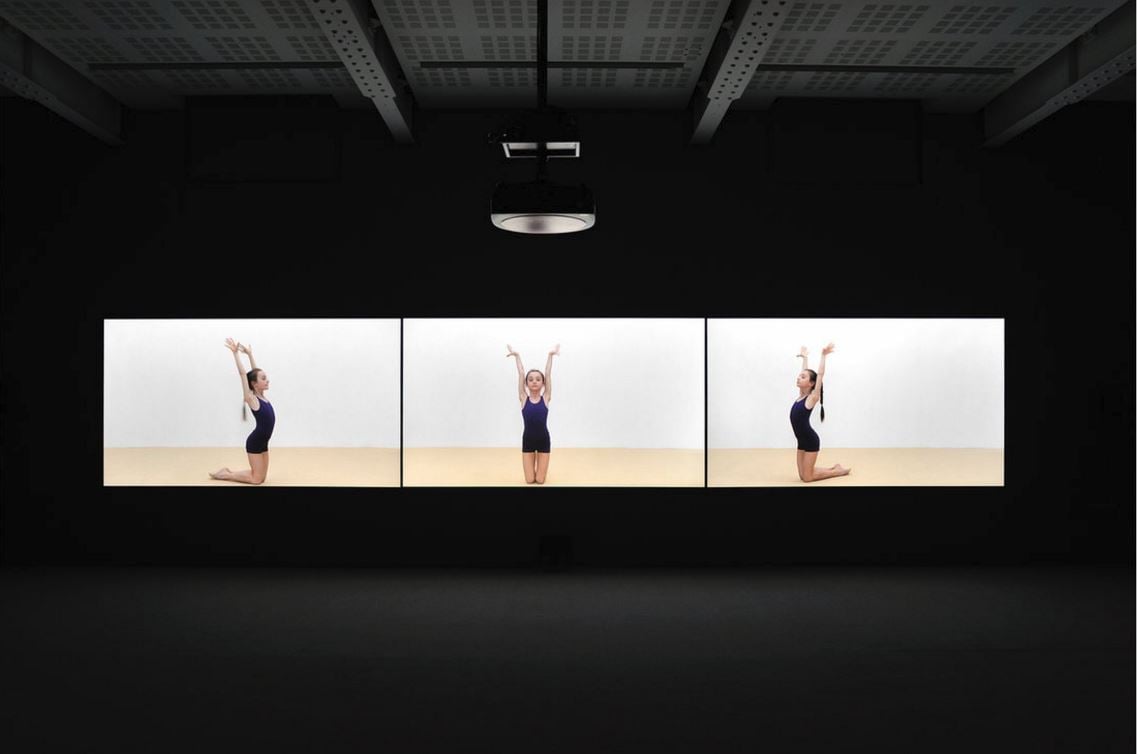Art & Exhibitions
In Praise of Rineke Dijkstra and Jeff Wall’s Slow Images at Marian Goodman
Both exhibitions reward long, close looking.

Image: Courtesy Marian Goodman Gallery.
Both exhibitions reward long, close looking.

Christian Viveros-Fauné

Photography today is stuck in the fast lane. Super-speedy smartphones are the new Brownie cameras, people risk life and limb for snapshots of tourist attractions, and tens of millions flock to Instagram to express their inner paparazzo. But if everyone is running around taking pictures, it’s fair to ask: Where are they all going?
A remarkably compelling argument for thoughtful, slow images thrives at Marian Goodman Gallery in New York, with excellent shows by Rineke Dijkstra and Jeff Wall. These justly celebrated photographers prosper in totally unrelated exhibitions. It’s tempting therefore to use a supermarket metaphor to describe the experience. In this two-fer, you get a pair of genius artist for the price of a single gallery visit.

Jeff Wall, Mask Maker, (2015).
Courtesy Marian Goodman Gallery.
Consisting of seven large prints and a single triptych, Wall’s most recent New York outing is made up mostly of work the Canadian artist created over the last eighteen months. A concurrent exhibition at Marian Goodman’s London space features the same number of elaborately conceptual photo works. Additionally, the Vancouver-based photographer recently inaugurated a show at the Pérez Art Museum Miami that shows, according to the museum, “individuals living on the streets, under highways, and in urban back alleys.”
A self-described maker of “near-documentary” images, Wall long ago eschewed straight photography for a career spent blending fact and fiction. Since the late 1970s, when he created several lightbox images based on classical paintings—most prominently Eugène Delacroix’s The Death of Sardanapalus and Édouard Manet’s A Bar at the Folies-Bergères—the artist has excelled at making photographs that have the presence of walk-in canvases. The majority of the images in his New York exhibition trend deceptively to the topical—like the works at the Pérez. Showing a staged homelessness, these pictures don’t so much document as dramatize (or is that re-dramatize?) vital human experience.
Wall’s hybrid approach to photography combines and updates various media. “I thought, for my purposes,” he has said, “that painting needed to be more psychologically intense, cinema needed to be ‘arrested’ and photography needed to be made viable at the scale of the human body.” That focus naturally leads to photographs like Staircase & two rooms (2014) and Approach (2014). The first depicts two robed men flanking the staircase of an SRO hotel. The elements are arranged in one central and two side panels, like in an altarpiece. The second photo presents a charcoal-tinged black-and-white image of a woman standing before a man in a cardboard box. The fact that she’s also clearly indigent doesn’t keep her from considering him warily, like a jogger meeting a strange dog.
If these and other pictures look like they’ve been dutifully orchestrated, that’s because they have. In an act of supreme self-reflexivity, Wall gives us plenty of clues with which to pull apart his static movies—among them the lighting, which is theatrical even in images taken outdoors. Yet as seen in the exhibition’s oddest photo, Listener (2015), the artist consistently invokes heightened truths that operate beyond the bounds of realism. His photographs, in fact, routinely marry reality to representation. How else to explain a picture that, though it looks like a single frame from a cinematic beatdown, proves so much more disturbing than anything in End of Watch or Training Day?

Rineke Dijkstra, The Gymschool, St. Petersburg (2014).
Courtesy Marian Goodman Gallery.
Dijkstra, for her part, has made a career of squeezing moments of great realism for all they’re worth and more. Over time, she has become the doyenne of the wordless art confession, enticing from her photographic and videotaped subjects admissions they hardly know they’re making—all while presenting images of remarkable clarity and empathy.
At Goodman, a three-channel video installation captures the alternately graceful and monstrous movements of eleven young Russian gymnasts at a prestigious school in St. Petersburg. Dijkstra’s footage records the incredible athleticism as well as the cartilaginous flexibility of a group of eight- to twelve-year-old girls. As they move through their routines, they look like crabs, sharks, lizards, and snakes. In their supreme control, they also resemble Little Miss Texas pageant contestants. Who knew that perfection could be so cruel?
Few instances of gallery-going reap as many rewards as are found in these simultaneous shows. Walk, don’t run to see Wall’s and Dijkstra’s exhibitions—but whatever you do, make sure not to miss this double-barreled lesson in slow looking.